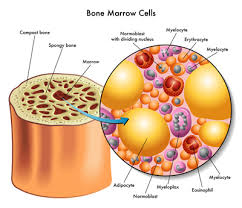
Diagnosed with Cancer? Your two greatest challenges are understanding cancer and understanding possible side effects from chemo and radiation. Knowledge is Power!
Learn about conventional, complementary, and integrative therapies.
Dealing with treatment side effects? Learn about evidence-based therapies to alleviate your symptoms.
Click the orange button to the right to learn more.
- You are here:
- Home »
- Blog »
- Pre-Myeloma »
- SMM Progression- M-spike and FLC are key-
SMM Progression- M-spike and FLC are key-

Several prediction models for SMM progression to MM have been proposed and are typically based on a combination of biomarkers at diagnosis, such as level of MP, BMPCs, and FLCr.
Hi David- I have been diagnosed with smoldering multiple myeloma. Would it help to join the Pre-MM Program so maybe my SMM wouldn’t progress to full multiple myeloma? Peter
Hi Peter-
- MM Survivor
- MM Cancer Coach
- Director PeopleBeatingCancer
Recommended Reading:
Dynamic Changes in Monoclonal Protein May Predict SMM Progression to MM
“The level of monoclonal protein (MP) and bone marrow plasma cells (BMPCs) at diagnosis and dynamic changes in MP and free light chain ratio (FLCr) during follow-up were independently associated with progression from smoldering multiple myeloma (SMM) to multiple myeloma (MM), according to the results of a retrospective study published in the American Journal of Hematology.
Several prediction models for SMM progression to MM have been proposed and are typically based on a combination of biomarkers at diagnosis, such as level of MP, BMPCs, and FLCr. Evolving MP has also been proposed as a potential predictive biomarker. The purpose of this study was to evaluate biomarkers among patients with SMM who have or have not progressed to MM.
The retrospective study included 126 patients with SMM, including 44 who had progressed to MM. MP and FLC were evaluated approximately every 2 months. Data from electronic medical records were used to assess demographics, imaging, and date of progression. The median follow-up was 4.5 years.
Confirming prior studies of prediction models at diagnosis, MP >20 g/L and BMPC >20% alone or together were independent risk factors for progression to MM, with a significantly shorter time to progression (TTP) compared with patients who had no risk factors (P =.006 vs 1 risk factor; P =.011 1 risk factor vs 2 risk factors).
Evolving MP of higher than 5 g/L combined with evolving involved/uninvolved FLCr of greater than 4.5 were also significantly associated with a shorter TTP (P <.001). Evolving MP and/or FLCr occurred among 82% of patients who progressed compared with 30% of patients who did experience progression. The median time to progression once an evolving MP or FLCr was identified was 5 months (range, 2-38 months).
The authors concluded that “the findings in our retrospective study support that dynamic changes in MP can identify patients at high risk of progression.” They added, however, that “as these findings are exploratory, they should be validated in future prospective studies.”
Reference
Gran C, Luong V, Bruchfeld JB, et al. Dynamic follow-up of smoldering multiple myeloma identifies a subset of patients at high risk of progression. Am J Hematol. Published online December 2, 2020.
Drug Shows Promise in Slowing Progression of Smoldering Myeloma to Cancer
“The drug lenalidomide (Revlimid) may delay the development of multiple myeloma in individuals with smoldering myeloma that is at high risk of progressing to cancer, according to preliminary results from a clinical trial.
Smoldering myeloma is a precancerous condition that alters certain proteins in blood and/or increases plasma cells in bone marrow, but it does not cause symptoms of disease. About half of those diagnosed with the condition, however, will develop multiple myeloma within 5 years.
Because there are no approved treatments for smoldering myeloma, doctors have long adopted a “watch and wait” approach, closely monitoring individuals for evidence of progression to active (symptomatic) multiple myeloma, such as damage to certain organs.
But by the time symptoms of multiple myeloma appear, the disease may have caused painful and debilitating health problems, including bone fractures and kidney failure.
In the NCI-supported clinical trial, researchers found that lenalidomide—which is already used to treat multiple myeloma—may delay or slow the progression of smoldering myeloma…
Individuals who received the drug had a reduced risk of developing multiple myeloma within 3 yearsExit Disclaimer, compared with individuals who were observed for symptoms of cancer during the same period…
More than half of the participants in the trial who were receiving the drug stopped taking it because of side effects, such as fatigue…”


